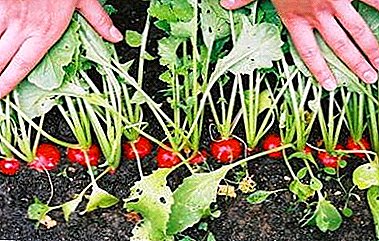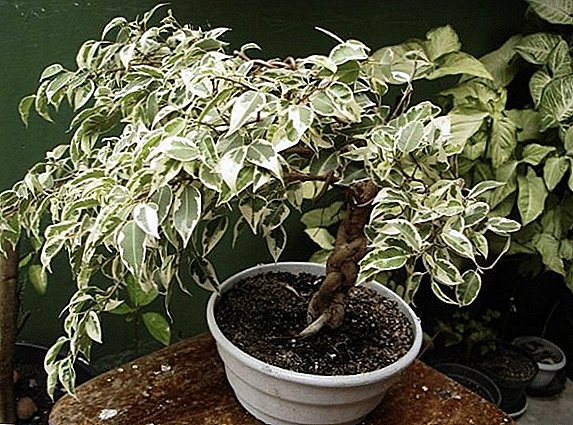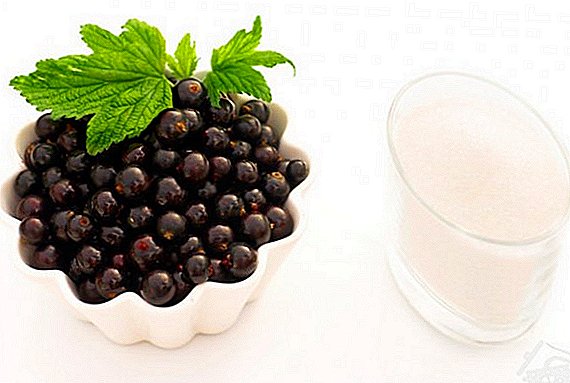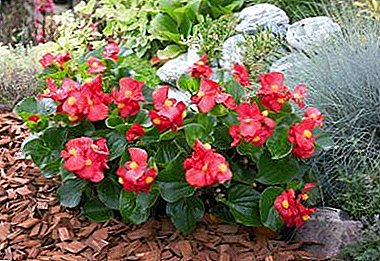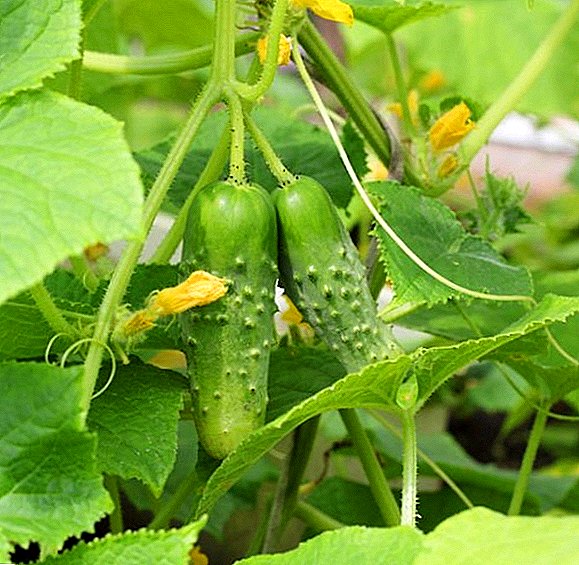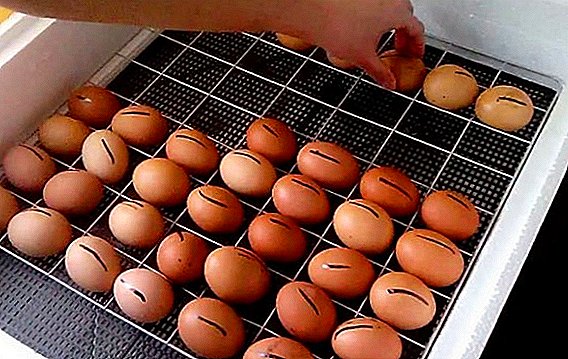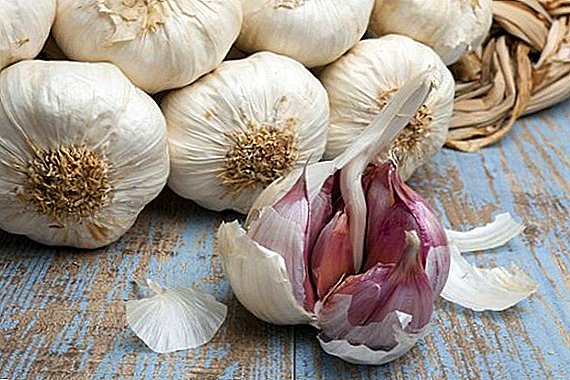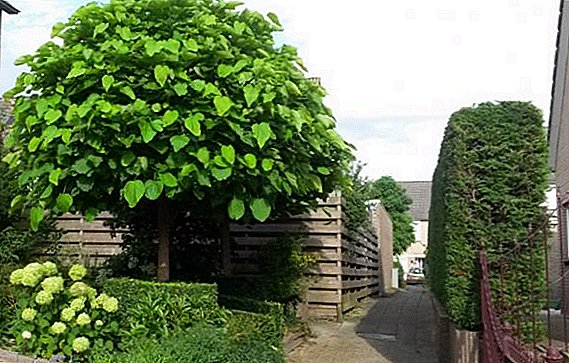 Many of us have summer cottages or our own backyards - and I want them to look beautiful. For their decoration primarily use various trees and shrubs. One of such ornamental plants is bignoniform catalpa. Edible fruits from it not to receive, but beauty and originality are provided.
Many of us have summer cottages or our own backyards - and I want them to look beautiful. For their decoration primarily use various trees and shrubs. One of such ornamental plants is bignoniform catalpa. Edible fruits from it not to receive, but beauty and originality are provided.
Where grows wild
In the wild, catalpa is found in the forests of North America among broad-leaved trees. It prefers a warm and humid climate. It was brought to Europe to decorate parks in the XVIII century. Here it is often found on the shores of the Black Sea.  In the south, this plant can grow up to 20 m, and in our latitudes - 3-4 m, sometimes it grows with a bush of 2-3 trunks. It has large leaves, up to 20 cm long. Before flowering, their color changes from light yellow to green.
In the south, this plant can grow up to 20 m, and in our latitudes - 3-4 m, sometimes it grows with a bush of 2-3 trunks. It has large leaves, up to 20 cm long. Before flowering, their color changes from light yellow to green.
Did you know? Leaves secrete substances that repel mosquitoes. When rubbed, they emit an unpleasant smell.
Flowers up to 30 cm in size, have a yellowish-white color with specks. They look like foxglove flowers, and the inflorescences are very reminiscent of chestnut "candles".
Common varieties
There are about 10 known catalps. Four of them are grown in our territory. Basically, the catalpa has green leaves, but there are varieties with purple or yellow color. Bignonia catalpa has three decorative forms, distinguished primarily by the color of the foliage.
Read also about the features of growing catalpa.
Yellow Leaf Aurea
This form of catalp has an average height, grows slowly. Inflorescences are white, appear in May-June. In adult specimens, the branches are widely spread and fall to the ground. The leaves are yellow. In winter, it can freeze to the ground, and in summer it can fully grow. 
Green leaf form Nana
This bonsai grows slowly. Green leaves. This plant has no flowers. The branches are covered with thin light brown bark. 
Purpurea Purple
The height of the tree is up to 8 m. For a year it grows by 30 cm. The leaves are heart-shaped, up to 15 cm long, purple, and later turn green. Flowers are white. The fruits are box-shaped (narrow and pod-shaped); they do not have time to ripen to the cold and stay on the tree until spring. 
Frost resistance
Due to its good frost resistance, catalpa is widespread in our region. Most of its species can withstand temperatures down to 35 ° C and below. But in young specimens the wood is still weak and they can die. It is necessary to plant a catalpa in a place protected from drafts, and in the first years to warm the trunks with sacking. The older the catalpa is, the more it is frost resistant.
The experience of growing this plant has shown that winter hardiness depends on the seeds and cuttings.
Important! You need to choose cuttings and seeds that have been acclimatized, that is, acquired in the neighboring regions.
It is better not to germinate catalpa seeds in greenhouses, because the plant very quickly gets used to the conditions that were at the very beginning of growth. And, having got used to hothouse conditions, after disembarking in an open ground can die.
Young branches of catalpa often freeze slightly. This problem is solved with the help of trimming, thus creating the desired shape of the tree. Trimming is carried out every year. After this procedure, the plant grows very quickly. 
Application in landscape design
Recently, catalpa are widely used in urban landscaping, replacing lindens and poplars. It looks good in single and group landings.
A single tree can be placed at the entrance to a store or cafe, as well as near the door of a house or cottage. In the park, you can surround it with a hawthorn or dogwood hedge. Beautifully shade decorative Catalpa oaks and magnolias. Good for landing on the sides of the avenues.
Catalpa is also used in medicine, cosmetology and furniture manufacturing.
In small gardens and areas it is better to place a tree in the background. You can surround it with low shrubs or perennials (thyme or phlox). Looks very nice on the banks of reservoirs. You can combine forms with different leaf colors: for example, yellow and purple.  The plant is good because it does not lose its decorative appearance. Its leaves are practically not exposed to diseases and are not damaged by pests, they do not sag in dry weather. In autumn, the leaves almost do not turn yellow and fall off only at temperatures below 0 ° C.
The plant is good because it does not lose its decorative appearance. Its leaves are practically not exposed to diseases and are not damaged by pests, they do not sag in dry weather. In autumn, the leaves almost do not turn yellow and fall off only at temperatures below 0 ° C. 
Growing conditions
Although the catalpa is unpretentious, but for the tree to grow and delight you, it is still necessary to observe some conditions:
- The soil should be fertile and moist, have good drainage. The best acidity is 7, that is, neutral.
- Seedlings should be placed in well-lit areas, protected from wind and drafts.
- Catalpa does not tolerate the proximity of groundwater and flooding with melt water.
Did you know? Catalpa fruits look like pasta, so the plant is also called macaroni tree.
Landing rules
Plant the tree before the spring sap flow or after the leaves fall. Between adjacent plants, the distance should be no less than 4 m, since they love space. We fill the pit with a depth of 1 m and a width of 70 cm with a fertile soil mixture, which consists of:
- 2 pieces of sod land;
- 2 parts of sand;
- 3 parts of humus;
- 1 part peat;
- about 6 kg of ash.
Acidity should be around pH 7. At the bottom of the pit it is necessary to fill the drainage of crushed stone with a thickness of 14-16 cm.
Learn how to independently determine the acidity of the soil and deoxidize the soil.
When planting it is necessary to ensure that the root neck is on the surface. After watering, the earth will settle and the neck may deepen. The surface must be peated.
Video: landing catalpa
Care features
Catalpa moisture-loving, but does not tolerate waterlogging. If there is no drought, then water sufficiently once a week with 15-20 liters of water. The tree responds very well to top dressing, they accelerate its growth. For this purpose, suitable manure, which should be applied once a month, is suitable.
Under the plant, it is necessary to regularly remove weeds and loosen to a depth of 30 cm. In the spring, pruning is done before the buds swell. Remove dry frozen branches. Skeletal branches are pruned, excess shoots are removed.
Although catalpa and refers to frost-resistant plants, young trees for the winter still need to be warmed.
Important! Young trees are better to warm before the onset of cold weather is just like warming roses. You can cover with spruce leaves, or sprinkle with earth, or at least wrap sacking.
There is a legend that in the catalpa, at the whim of the Buddha, the ears of elephants and the tails of monkeys united. This emphasizes the unusual appearance of the plant. Therefore, planting it on a country site, you will not only please yourself, but also surprise your friends.


